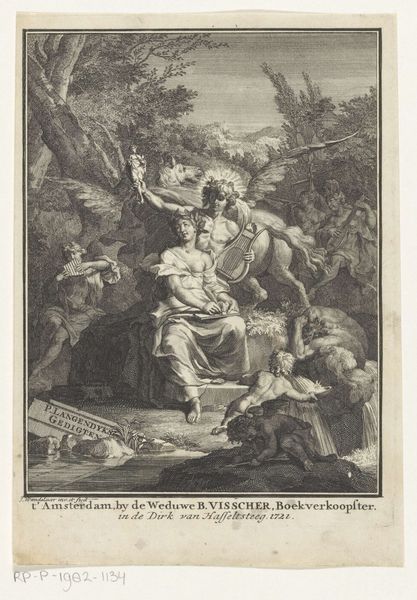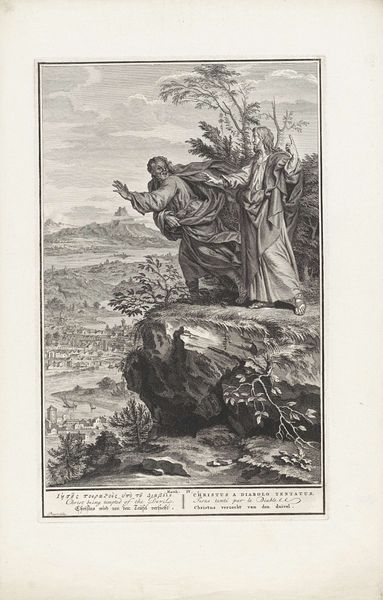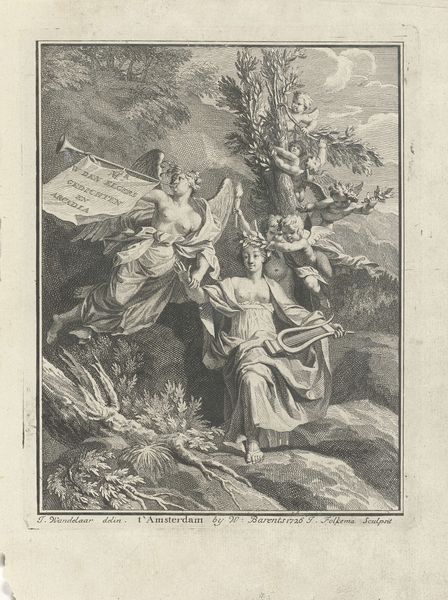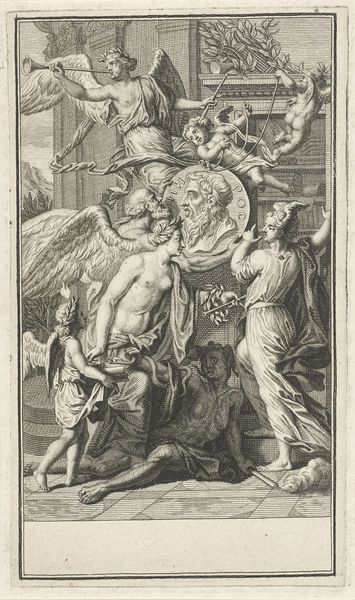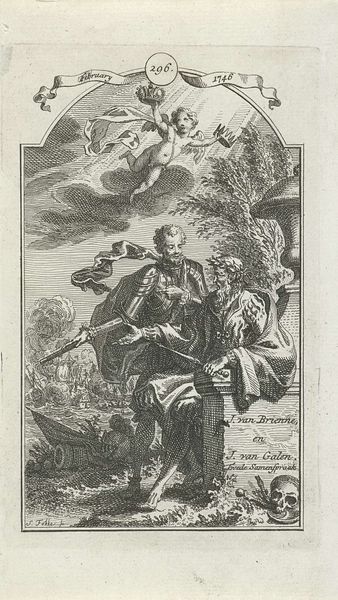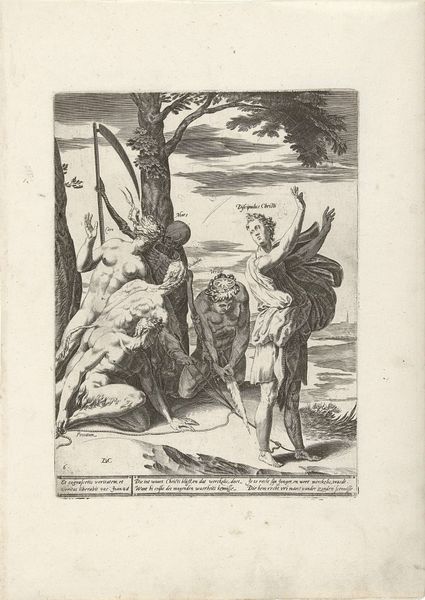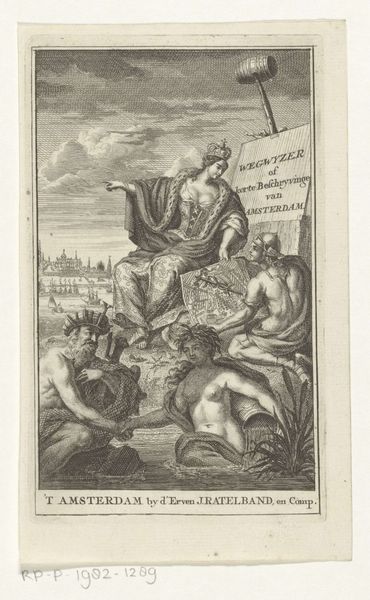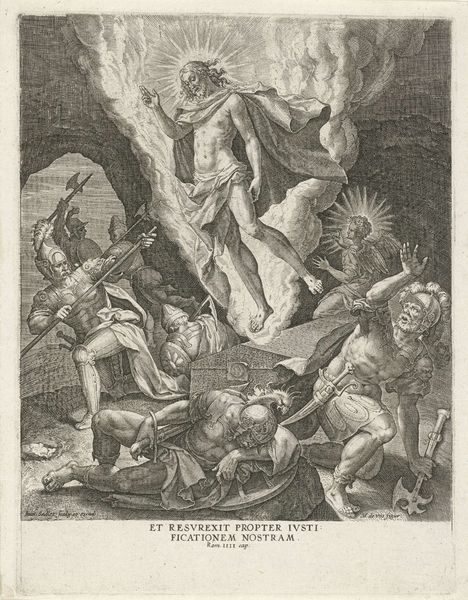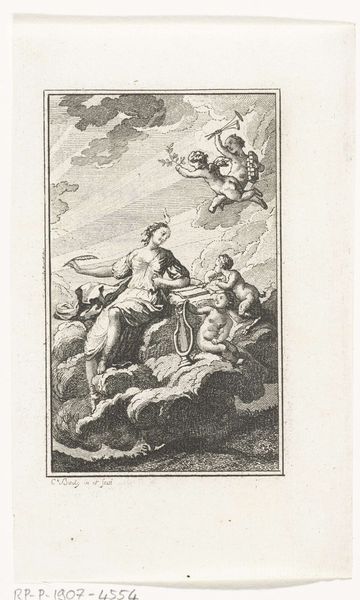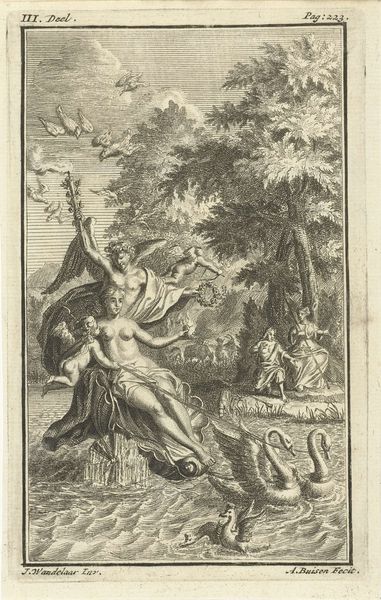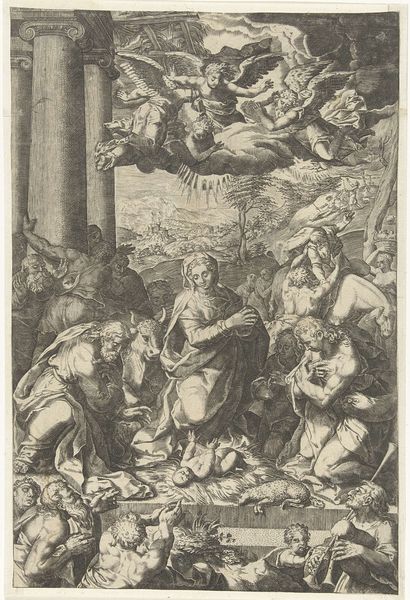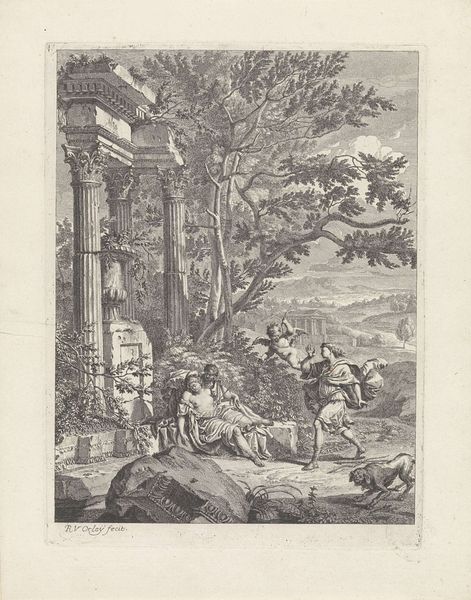
print, engraving
#
baroque
# print
#
landscape
#
figuration
#
history-painting
#
engraving
Dimensions: height 270 mm, width 181 mm
Copyright: Rijks Museum: Open Domain
Curator: Lefebvre's 1682 engraving, titled "H. Hieronymus in de wildernis", really strikes a note of profound introspection. Editor: Yes, a rather theatrical, dark mood piece, I'd say. Note the contrast between the meticulous cross-hatching and the rather open areas suggesting light breaking through. The figure is caught somewhere between detail and abstraction. Curator: Exactly, and consider the cultural context. The print emerges from a period marked by renewed interest in representations of hermetic existence. Saint Jerome’s choice to abandon civilization resonates with rising debates within the church about moral conduct and spiritual dedication. Editor: True, the lion seems placed with deliberate formalism almost as if an allegorical device--yet also integrated to lend realism. Note also, the central figure positioned at a diagonal to emphasize the spatial design that further creates depth. Curator: The decision to portray Saint Jerome not amidst traditional iconography but in this specific rugged setting speaks volumes. During the late 17th century, the aristocracy was reconsidering their roles and relationship to the impoverished. It invites reflection on social obligations beyond prescribed norms. Editor: Yet what strikes me is how the stark landscape--composed as almost backdrop --adds psychological dimension, reinforcing isolation through compositional framing and use of tonality, lending the piece incredible intimacy, no? Curator: Indeed! Lefebvre manages to create dialogue about personal devotion against the responsibilities of his contemporaries. What purpose did images serve within discussions and reforms during this complex epoch. Editor: And to consider that the engraving’s aesthetic framework lies in stark tonal gradation within severe line quality, truly evokes an aesthetic, stark isolation reflective of a deep spiritual quest! It’s both theatrical and quietly contemplative. Curator: Thinking of Saint Jerome not as an ancient figure, but rather through his relevancy to those seeking societal improvement is a really impactful, innovative move by Lefebvre, truly influencing perceptions among religious adherents during times of religious reform. Editor: Lefebvre successfully employed various formal techniques, contributing profound insights into spirituality; the artwork showcases masterful technique that harmoniously synthesizes aesthetic ingenuity with substantive expression of human values.
Comments
No comments
Be the first to comment and join the conversation on the ultimate creative platform.
